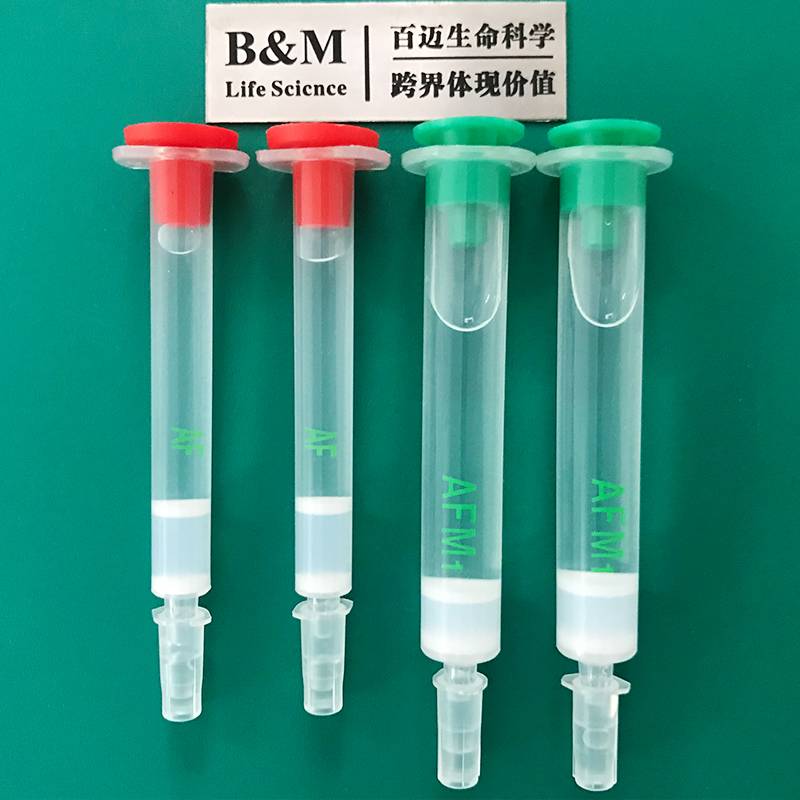Zearalenone (ZEN) is also known as F-2 toxin. It is produced by various fusarium fungi such as Graminearum, Culmorum and Crookwellense. Fungal toxins released into the soil environment. The chemical structure of ZEN was determined by Urry in 1966 using nuclear magnetic resonance, classical chemistry and mass spectrometry, and was named: 6-(10-hydroxy-6-oxo-trans-1-decene)-β -Ranoic acid-lactone. The relative molecular mass of ZEN is 318, the melting point is 165°C, and it has good thermal stability. It will not decompose when heated at 120°C for 4 hours; ZEN has fluorescence characteristics and can be detected by fluorescence detector; ZEN will not be detected in water, S2C and CC14 Dissolve; It is easy to dissolve in alkali solutions such as sodium hydroxide and organic solvents such as methanol. ZEN pollutes grains and their by-products all over the world extensively, causing huge losses to planting and breeding industries, and also posing a serious threat to food safety.
The limit standard of Zen in food and feed
Zearalenone pollution not only reduces the quality of agricultural products and feed, but also brings huge losses to economic development. At the same time, human health will also be caused by the intake of ZEN pollution or residual meat and dairy products and other animal-derived foods. And be threatened. my country’s “GB13078.2-2006 Feed Hygiene Standard” requires that the ZEN content of zearalenone in compound feed and corn should not exceed 500 μg/kg. According to the requirements of the latest “GB 2761-2011 Mycotoxins in Foods Limits” issued in 2011, the content of zearalenone ZEN in grains and their products should be less than 60μg/kg. According to the “Feed Hygiene Standards” that is being revised, the most stringent limit of zearalenone in compound feed for piglets and young sows is 100 μg/kg. In addition, France stipulates that the allowable amount of zearalenone in grains and rape oil is 200 μg/kg; Russia stipulates that the allowable amount of zearalenone in durum wheat, flour, and wheat germ is 1000 μg/kg; Uruguay stipulates that the allowable amount of zearalenone in corn, The allowable amount of zearalenone ZEN in barley is 200μg/kg. It can be seen that governments of various countries have gradually realized the harm that zearalenone brings to animals and humans, but they have not yet reached an agreed limit standard.
Harm of Zearalenone
ZEN is a kind of estrogen. The growth, development and reproductive system of animals that consume ZEN will be affected by high estrogen levels. Among all animals, pigs are the most sensitive to ZEN. The toxic effects of ZEN on sows are as follows: after adult sows are poisoned by ZEN ingestion, their reproductive organs will develop abnormally, accompanied by symptoms such as ovarian dysplasia and endocrine disorders; pregnant sows are in ZEN Miscarriage, premature birth, or high frequency of malformed fetuses, stillbirths and weak fetuses are prone to occur after poisoning; lactating sows will have reduced milk volume or unable to produce milk; at the same time, piglets ingesting ZEN-contaminated milk will also Symptoms such as slow growth due to high estrogen, severe cases will hunger strike and eventually die.
ZEN not only affects poultry and livestock, but also has a strong toxic effect on humans. ZEN accumulates in the human body, which can induce tumors, shrink DNA, and make chromosomes abnormal. ZEN also has carcinogenic effects and promotes the continuous expansion of cancer cells in human tissues or organs. The presence of ZEN toxins leads to the incidence of cancer in experimental mice. Increased experiments have also confirmed this. In addition, some studies have speculated that the accumulation of ZEN in the human body causes various diseases such as breast cancer or breast hyperplasia.
Detection method of zearalenone
Because ZEN has a wide range of pollution and great harm, ZEN’s testing work is particularly important. Among all the detection methods of ZEN, the following are more commonly used: chromatographic instrument method (features: quantitative detection, high accuracy, but complicated operation and extremely high cost); enzyme-linked immunoassay (features: high sensitivity and quantitative energy, but The operation is cumbersome, the detection time is long, and the cost is high); the colloidal gold test strip method (features: fast and easy, low cost, but the accuracy and repeatability is poor, unable to quantify); fluorescence quantitative immunochromatography (features: fast Simple and accurate quantification, good precision, but need to use equipment, reagents from different manufacturers are not universal).
Post time: Aug-12-2020

